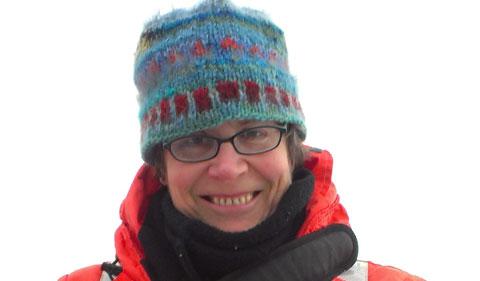Lisa Crockett

Recent News (opens in a new window)
Education
Ph.D., University of Maine
Courses Taught
- BIOS 342/542 Principles of Physiology I
- BIOS 463/563 Cell Chemistry
- BIOS 682 Physiological Ecology of Climate Change
Research Interests
- Lab: Wilson 110
Comparative Physiology and Biochemistry of Cold Adaptation, Physiology of Fishes, Membrane Biology, Polar Biology
Biography
I almost majored in art history and worked at the Museum of Modern Art for five years. I received the B.S. in Zoology from the University of Maryland (summa cum laude), and the M.S. and Ph.D. in Zoology from the University of Maine. Dr. Bruce Sidell was my graduate adviser. I was a Postdoctoral Fellow in the Department of Zoology at Arizona State University. There I worked with Dr. Jeffrey Hazel. I have been at Ohio University since 1995. I have worked in the Antarctic since 1980.
Representative Publications
O’Brien, K.M., E.L. Crockett et al. (2022). The time is right for an Antarctic biorepository network. Proceedings of the National Academy of Sciences. 119(50): e2212800119.
O’Brien. K.M., W. Joyce, E.L. Crockett, M. Axelsson, S. Egginton, and A.P. Farrell. (2021). Resilience of cardiac performance in Antarctic notothenioid fishes in a warming climate. Journal of Experimental Biology 224: doi:10.124/Jeb.220129.
Biederman, A.M., K.M. O’Brien, and E.L Crockett (2021). Homeoviscous adaptation occurs with thermal acclimation in heart and gill, but not the brain, in the Antarctic fish Notothenia coriiceps. Journal of Comparative Physiology B 191: 289-300.
Evans, E.R., A.M. Farnoud, K.M. O’Brien, and E.L. Crockett. (2021). Thermal profiles reveal stark contrasts in properties of biological membranes from heart among Antarctic notothenioid fishes which vary in expression of hemoglobin and myoglobin. Comparative Biochemistry and Physiology B 252: 110539.
Biederman, A.M., D.E. Kuhn, K.M. O’Brien, and E.L. Crockett. (2019). Physical, chemical, and functional properties of neuronal membranes vary between species of Antarctic notothenioids differing in thermal tolerance. Journal of Comparative Physiology B 189: 213-222.
Egginton, S., M. Axelsson, E.L. Crockett, K.M. O’Brien, and A.P. Farrell. (2019). Maximum cardiac performance of Antarctic fishes that lack hemoglobin and myoglobin: exploring the effects of warming on nature’s natural knockouts. Conservation Physiology 7: 10.1093/conphys/coz049.
J.M. Grim, M.C. Semones, D.E. Kuhn, T. Kriska, A. Keszler, and E. L. Crockett. (2015): Products of lipid peroxidation, but not membrane susceptibility to oxidative damage, are conserved in skeletal muscle following temperature acclimation. (opens in a new window)Am J Physiol Regul Integr Comp Physiol 308: R439–R448
K.M. O'Brien and E.L. Crockett. (2013): The promise and perils of Antarctic fishes. (opens in a new window)EMBO reports 14 (1): 17-24.
I.A. Mueller, J.M. Grim, J.M. Beers, E.L. Crockett, and K.M. O'Brien. (2011): Inter-relationship between mitochondrial function and susceptibility of oxidative stress in red- and white-blooded Antarctic notothenioid fishes. Journal of Experimental Biology 214: 3732-3741.
J.M. Grim, K.A. Hyndman, T. Kriska, A.W. Girotti, and E.L. Crockett. (2011): Relationship between oxidizable fatty acid content and level of antioxidant glutathione peroxidases in marine fish. Journal of Experimental Biology 214: 3751-3759.
Crockett, E.L. (2008): The cold but not hard fats in ectotherms: consequences of lipid restructuring on susceptibility of biological membranes to peroxidation, a review. J. Comp. Physiol. B 178: 795-809.
Hassett, R.P. and E.L. Crockett (2009): Habitat temperature is an important determinant of cholesterol contents in copepods. Journal of Experimental Biology 212: 71-77.
Grim, J.M. D.R.B. Miles, and E.L. Crockett (2010): Temperature acclimation alters oxidative capacities and composition of membrane lipids without influencing activities of enzymatic antioxidants or susceptibility to lipid peroxidation in fish muscle. Journal of Experimental Biology 213: 445-452.
Crockett, E.L. (2011). Antioxidant potential is positively correlated with mitochondrial enzyme activity in Antarctic and non-Antarctic notothenioids. Polar Biology 34: 113-118.